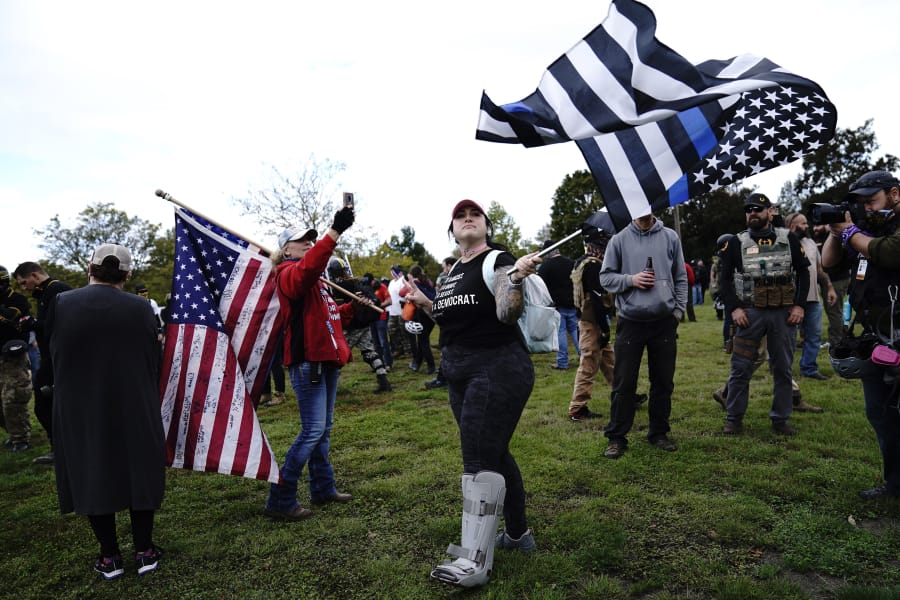PORTLAND, Ore. — When wildfires threatened rural Oregon communities last month, another unwelcome phenomenon accompanied them: armed vigilantes blocking entry to outsiders, based on false rumors that protesters had not only started the fires, but also were there to loot the evacuated homes.
Throughout the West and beyond, in a summer marked by protests seeking racial justice, armed vigilantes also have shown up at Black Lives Matter events in small towns and big cities alike. Their presence in some places has the tacit support of law enforcement or even local elected officials.
Now, experts who monitor right-wing vigilantes and white nationalist organizations are on even higher alert for the possibility of violence at political rallies. They also fear vigilantes or armed groups might show up at ballot drop-off locations and outside of Nov. 3 polling places to intimidate voters and increase paramilitary activity afterward if election results are disputed or seen as illegitimate.
“We’ve been worried about paramilitarism and vigilantism around the election,” said Amy Herzfeld-Copple with the Western States Center, a social justice nonprofit that studies the far right in the West and helps local and state governments find ways to combat the rise of hate groups. “We know that we may not have results on election night. It may take days or weeks, and that creates an opening for chaos.”



